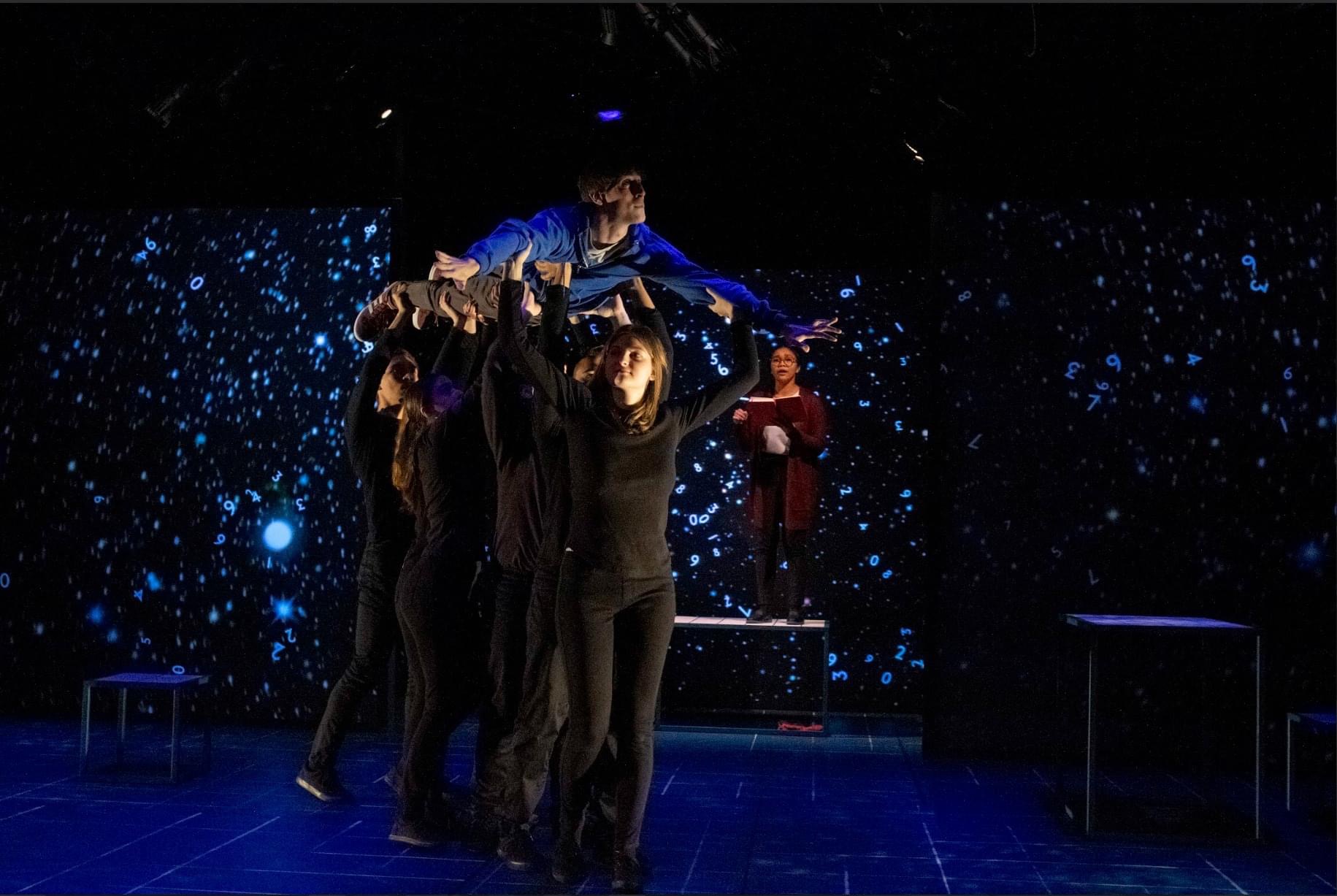By Jaidon Harris-Morales | Published November 8, 2023

Exceptional set design coupled with tremendous acting bythe lead character offered a unique look into the brain of a neurodivergent teenager in Kean Theatre Conservatory’s first production of the semester, “The Curious Incident of the Dog in the Nighttime.”
Set in the United Kingdom, the play follows neurodivergent teen Christopher Boone, played by Eitan Hiller, a senior in the theatre conservatory, as he sets out to solve a murder mystery.
While never explicitly mentioned, the character’s Autism Spectrum Disorder, or ASD, plays a huge role in the narrative.
“Neurodiversity is a very large spectrum,” said Hiller. “Everybody has particular traits that make them who they are and I wanted to make sure that I was staying true to what makes Christopher himself. It is important to me that people walk out of the theater having seen Christopher and not Eitan playing Christopher.”
To help achieve this goal, an autism consultant was brought in to ensure an accurate portrayal of neurodiversity. The cast met with the consultant throughout rehearsals and she contributed to Hiller’s performance.
“Curious Incident of the Dog in the Night-time . . . allows us great latitude for creativity in its presentation,” said Professor Holly Logue, who directed. “A perfect example of this is the use of projections, an original score, and the opportunities for students to help create the world of the play by becoming inanimate objects.”

The screens, which lined the rear of the Bauer Boucher Theatre, gave an almost cinematic feel to the production. Whereas the set traditionally has to be changed to fit the scene, the screens allowed the set to change as quickly as the actors moved across stage.
Along with the implementation of the projections, the ensemble cast were also used as a variety of inanimate objects as well as donning multiple roles. This creative decision from Logue and her team utilized the smaller size of the stage and cast to the fullest extent.
“Projections are a very common tool for scenic design, particularly in theatres that do not have what is called fly space,” said Logue. “The decision to use screens came from the theatre designteam, but primarily from the projection designer, Josh Langman.

”Though the performances of Hiller, along with supporting cast Lea Rafisura, Brandon Luckenbaugh and Tori Hiotakis, are integral to creating the world of the play, any production is inherently a team effort.
“I could not do this show without the rest of my cast who help me tell this story,” said Hiller. “As well as all of the amazing humans working backstage. There are so many people who you don’t see on stage, who have contributed so much to telling Christopher’s story.”

Everyone involved was successful in bringing the world to life. The combined use of projections, lights and sound, for example, was effective in conveying the feeling of overstimulation, something many with ASD experience.
“A director, with designers in scenery, costumes, lighting, sound, projections, works collaboratively to create a production that tells the story as they see it,” said Logue. “We discussed how to present the story after researching the themes, reading the original novel as well as the play, and we arrived at an approach that shows the world as Christopher might see it.”

You must be logged in to post a comment.